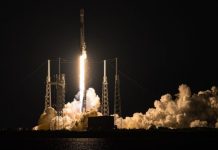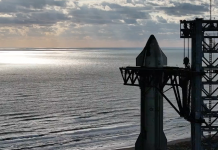Divide between Blue Origin and Sierra Space over space station partnership
The crew transfer from the Orbital Reef project highlights the complex state of the space industry’s plans to build a replacement for the ISS, working with the participation of several government space agencies, which has now cost more than $100 billion.
Brent Sherwood, head of Blue Origin’s Advanced Development Programs responsible for developing Orbital Reef, plans to leave the company by the end of 2023. The company says Sherwood is retiring. Bezos told Blue Origin employees last week that Amazon’s Dave Limp will replace Blue Origin’s current CEO by the end of this year.
The company’s New Shepard tourist rocket has remained grounded for more than a year after an accident in 2022. There are also delays in the development of the larger New Glenn rocket, which will be one of Blue Origin’s commercial vehicles and should be the company’s first step into Earth orbit.

Divide between Blue Origin and Sierra Space over space station partnership
In 2021, Blue Origin announced a partnership with Sierra Space to create a “business park in space.” Orbital Reef, in low Earth orbit, would function as a microgravity science laboratory for companies and government agencies, as well as a destination for tourists. A month after that announcement, Sierra announced it had raised $1.4 billion in its first round of funding. A third of this amount was planned to be used to contribute to the Orbital Reef program to create a residential inflatable module.
Today, there are disagreements between company management. Some Blue Origin employees who worked on Orbital Reef were transferred to satellite development. Other employees moved on to Blue Moon projects – in 2023, Blue Origin received $3.4 billion from NASA for its development as part of the Artemis program. At the same time, Blue Origin stated that it plans significant private investment in this project.
With the ISS set to retire by 2030, NASA is helping fund Orbital Reef and three other space station applications. The agency plans to increase funding for one or two space station applications in 2026.
Industry representatives acknowledge that the time until 2030 is too limited to create a full-fledged infrastructure in Earth orbit to replace the ISS. U.S. officials also worry that closing the ISS without an operational private station could give China’s national space station significant market share in low-Earth orbit exploration and tourism.




